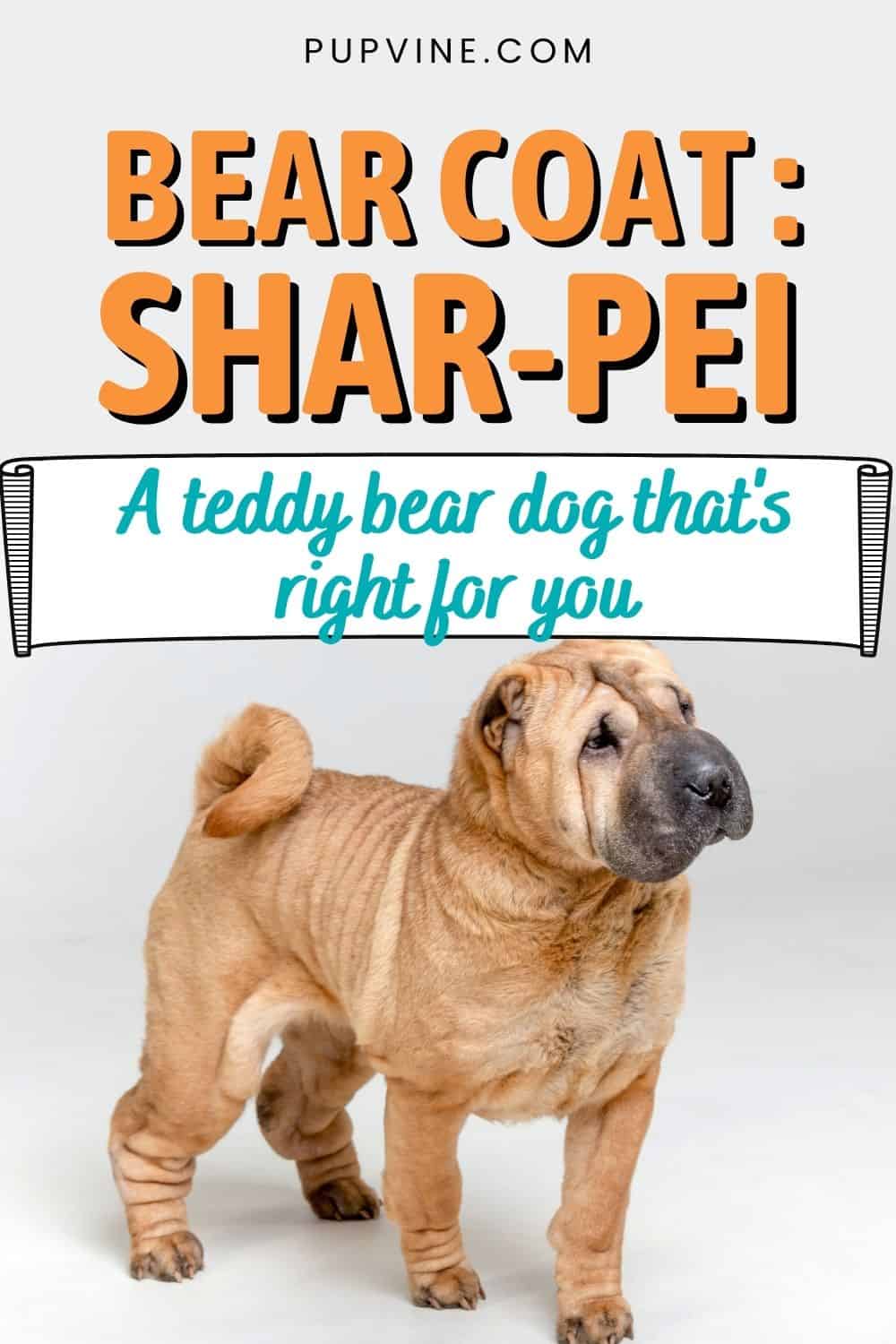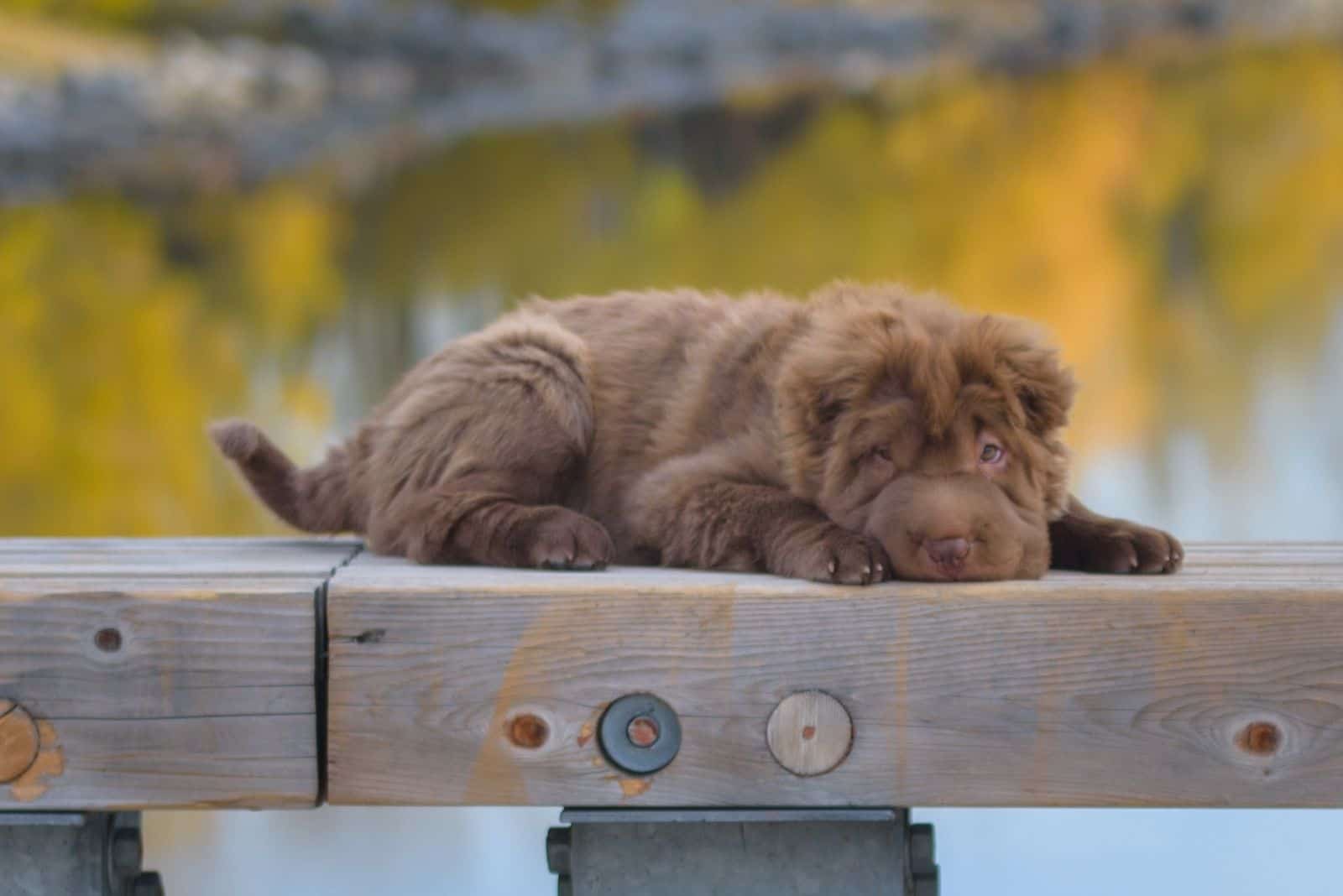It’s fair to say that the Chinese Shar-Pei has faced some challenges during its long history. It is one of the oldest dog breeds, and yet we really don’t know much about its past.
We do know that western travelers in China referred to them as Chinese fighting dogs when they observed the locals using them for this unsavory purpose.
As well as for fighting, they were used for hunting and guard dog duties.
They weren’t as wrinkly as those we see in the west today, and they were thought to have been bred with the Chow-Chow, another ancient Chinese breed.
The name for the Shar-Pei dog comes from the Chinese, Sand Skin, referring to their short, harsh coat that is like sandpaper. As well as the distinctive coat and skin folds, they also have a blue-black tongue.
By the 1970s, there were real fears that the breed was becoming extinct due to political unrest in the country.
The Chinese government regarded dogs as a luxury item, and during the 1940s, they decreed that dogs should be used as food. By 1978, there were just 60 Shar-Pei left in the world.
Attempts to save the breed were successful, but with an unexpected twist: unscrupulous breeders in Hong Kong and America rushed to take advantage of enthusiastic buyers in the western world.
They gave no thought to the welfare of the dogs involved and bred pure Shar-Peis with other breeds, such as the Bulldog, the Pug, and the Bull Terrier. The offspring were sold as purebred dogs to unsuspecting Americans, resulting in a variety of changes in the breed’s appearance.
Generally, they are now split into two types: Chinese and American Shar-Pei.
Then, it gets a tiny bit more complicated as people separate them down further into coat types and the shape of the mouth.
There are Meat Mouth and Bone Mouth, and Horse Coat and Brush Coat Shar-Peis, and finally, the Bear Coat. You can get any combination of these, such as a Meat Mouth – Brush Coat Shar-Pei, for example.
Don’t worry too much about trying to remember all these. The different mouth shapes simply refer to the fact that the newer variations have more flesh around the muzzle than the original Chinese Shar-Pei.
A horse coat is rough and prickly, and is thought to be closer to the original Shar-Pei, whereas the brush coat is softer and longer.
Now that we have a bit of background information, let’s find out a little more about the bear coat version, and help you decide whether it’s the right choice for you.
What Is A Bear Coat Shar-Pei?
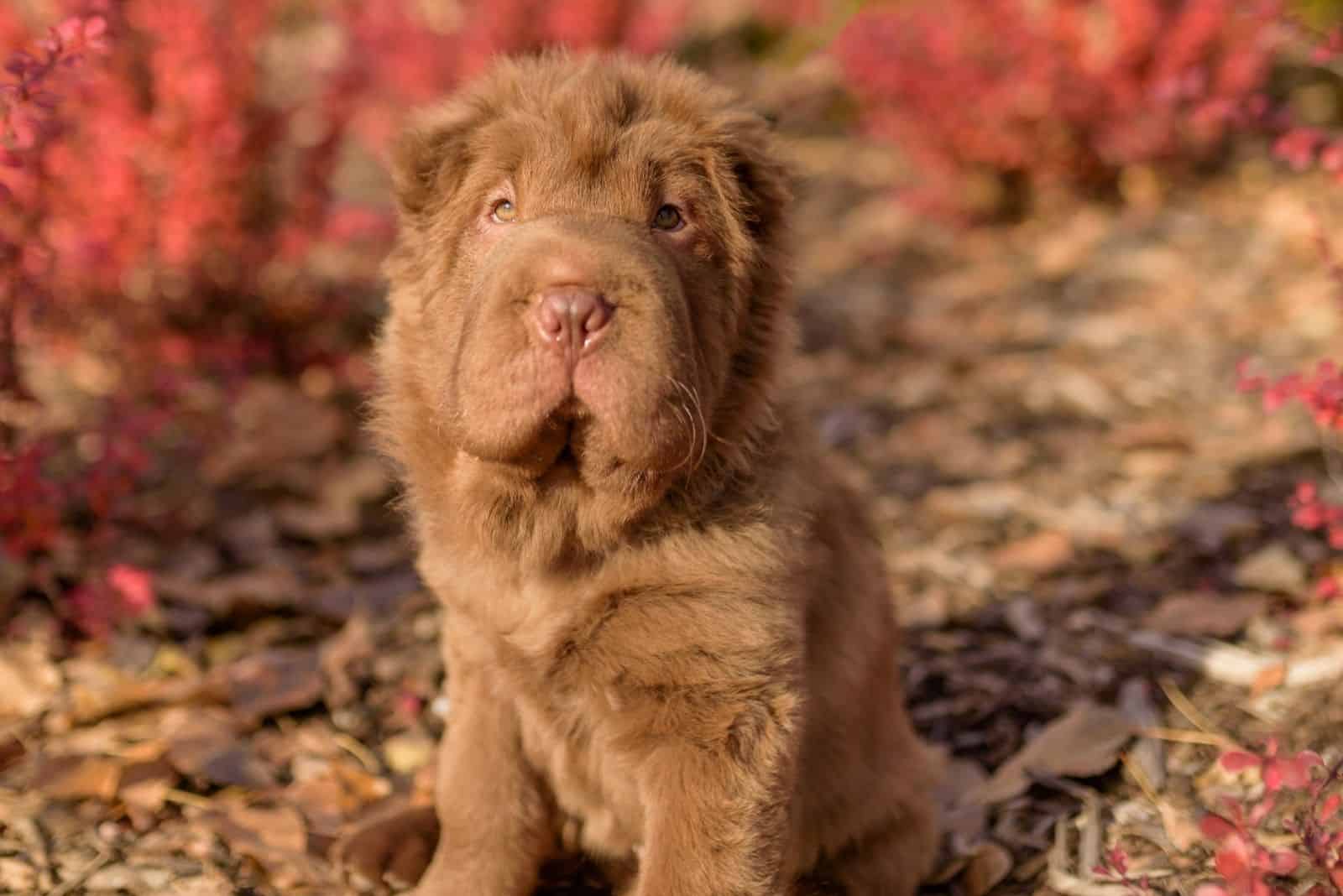
We’ve seen that the horse coat is short, rough, and prickly and that the brush coat is softer and longer. Well, the bear coat is longer still and softer, giving these dogs the appearance of a teddy bear, which accounts for its name.
The distinctive skin folds are hidden beneath a mass of soft fur, making this one of the most adorable dogs ever.
The long coat is caused by a recessive gene, meaning that it needs to be present in both parents in order for it to appear in the pups. The Shar-Pei is a unique breed, but the bear coat version is even rarer!
Even so, the American Kennel Club regards this as a fault, which disqualifies any dog with this type of coat from the show ring, even though it is entirely natural.
Bear Coat Shar-Pei Temperament
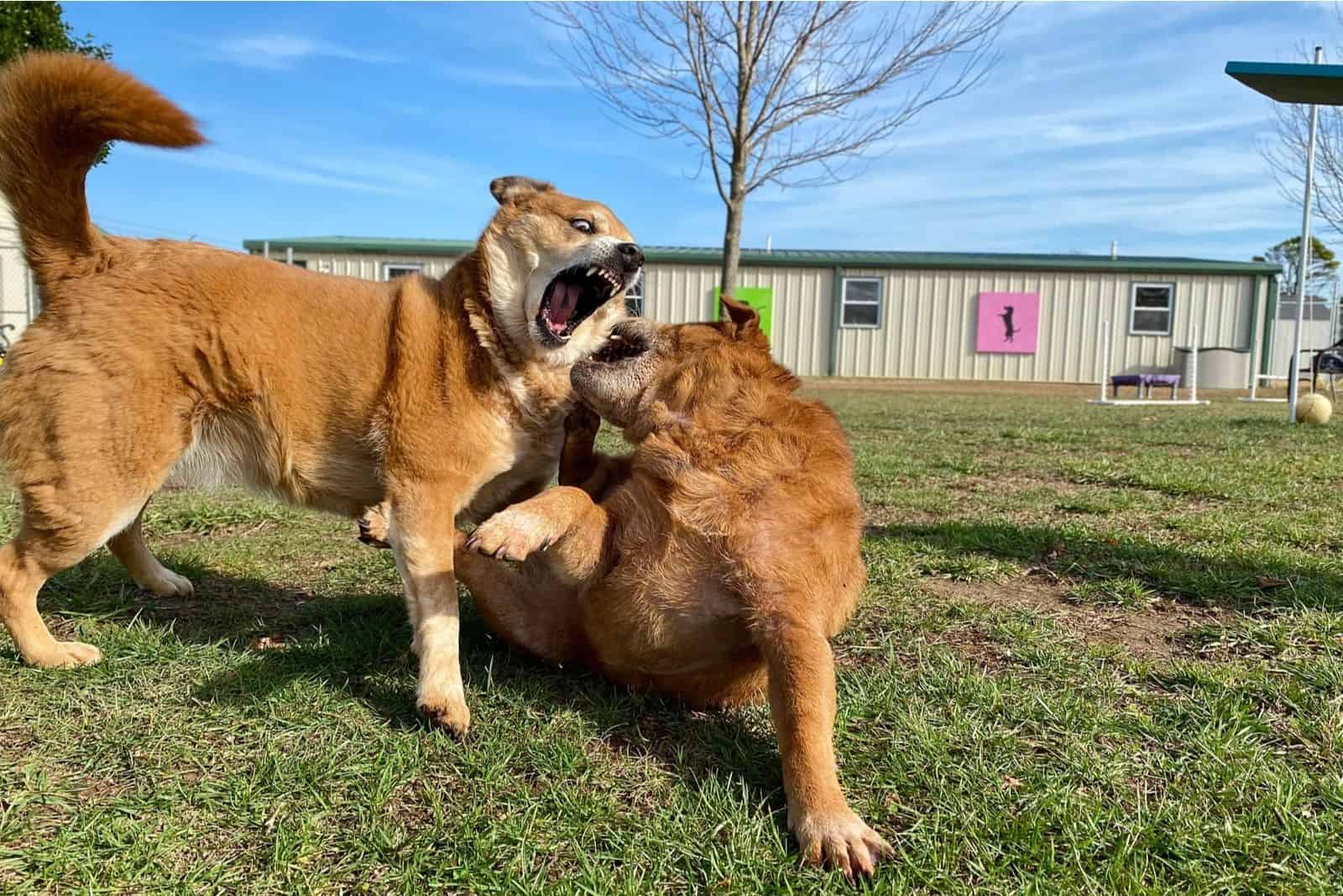
These dogs are generally affectionate, docile, and friendly toward their owners and family, although they are also known to be protective.
They are loyal but they enjoy their independence, meaning that they don’t need your constant attention. Even so, many are devoted to their owners and make excellent family dogs.
If there’s a negative side to these dogs, it’s that they can be stubborn at times. Early training is essential in order to overcome this problem.
Their natural intelligence usually wins through, and they soon learn what’s expected of them. A strong-willed adult Shar-Pei is not something you’ll want in your life!
Training should be undertaken firmly but kindly as these dogs won’t respond well to anything else. You need to establish a clear sense of command if you want them to respect and obey you. They do not like to be restrained, which can make grooming a bit of a challenge.
Although they are very calm dogs, they will react strongly when they suspect that there is a threat. This is their guard dog genes resurfacing, which is not a bad thing as long as it is under control. They can be aloof with strangers and aggressive toward other dogs, especially males toward other males.
As always, the best way to deal with this problem is to get them trained and socialized as soon as possible.
Because of the many challenges involved, they are not regarded as the best choice for inexperienced or first-time dog owners.
Other than this, the Shar-Pei is a happy, placid member of the family.
Bear Coat Shar-Pei Puppy
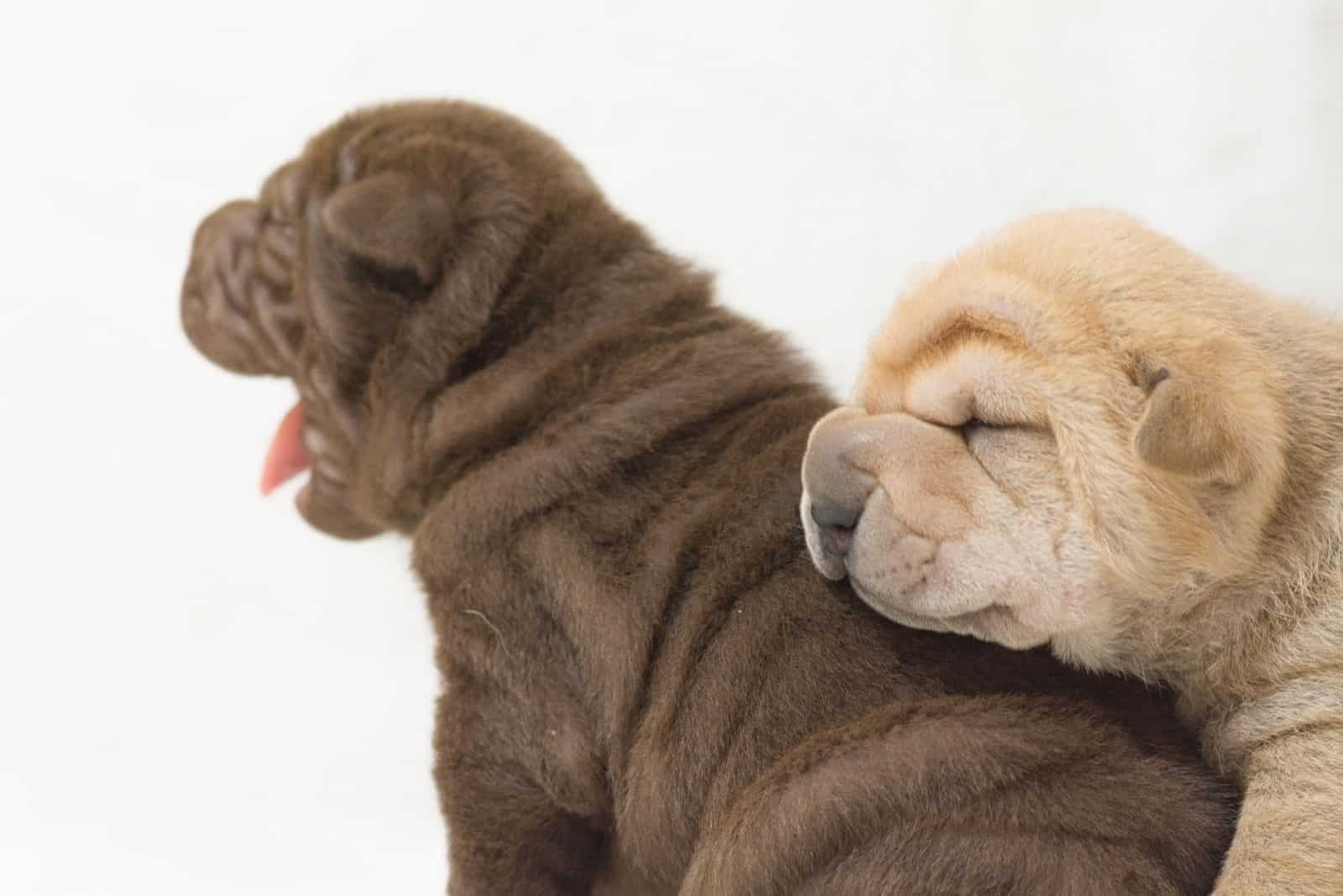
They’re fluffy and super cute. They’ve got adorable wrinkles and a teddy bear coat.
But, don’t race off to the first place that says Shar-Pei Puppies for sale!
These furballs need a lot of care and attention, so before taking one on, you need to know all the facts.
First, you can’t have one as a show dog as they’re disqualified from the show ring. This will be a companion dog only.
Now, this shouldn’t be a problem to many people as most dogs are pets, and people really don’t care much for breed standards.
However, your Bear Coat Shar-Pei puppy will need a lot of love, effort, and commitment if you’re going to make this a successful venture.
Not only will you have the financial burden of buying your pup, but you’ll also have the cost of vet bills for the first year or two (vaccinations, spaying/neutering, etc.) and potentially large medical costs later (see the section on health problems).
You’ll also have to commit to training, whether you take on this task yourself or enroll your dog in accredited training classes. The importance of training and socialization can’t be stressed enough!
The most important thing to remember is that these cuddly pups are going to grow up. They won’t be super-sized, but they will get bigger. The cute wrinkles will lessen as the dog grows into its skin.
This might all seem obvious to you, but dog shelters and rescue centers are testaments to the fact that dogs soon lose their appeal for some people when they are no longer puppies.
Bear Coat Shar-Pei Fully Grown
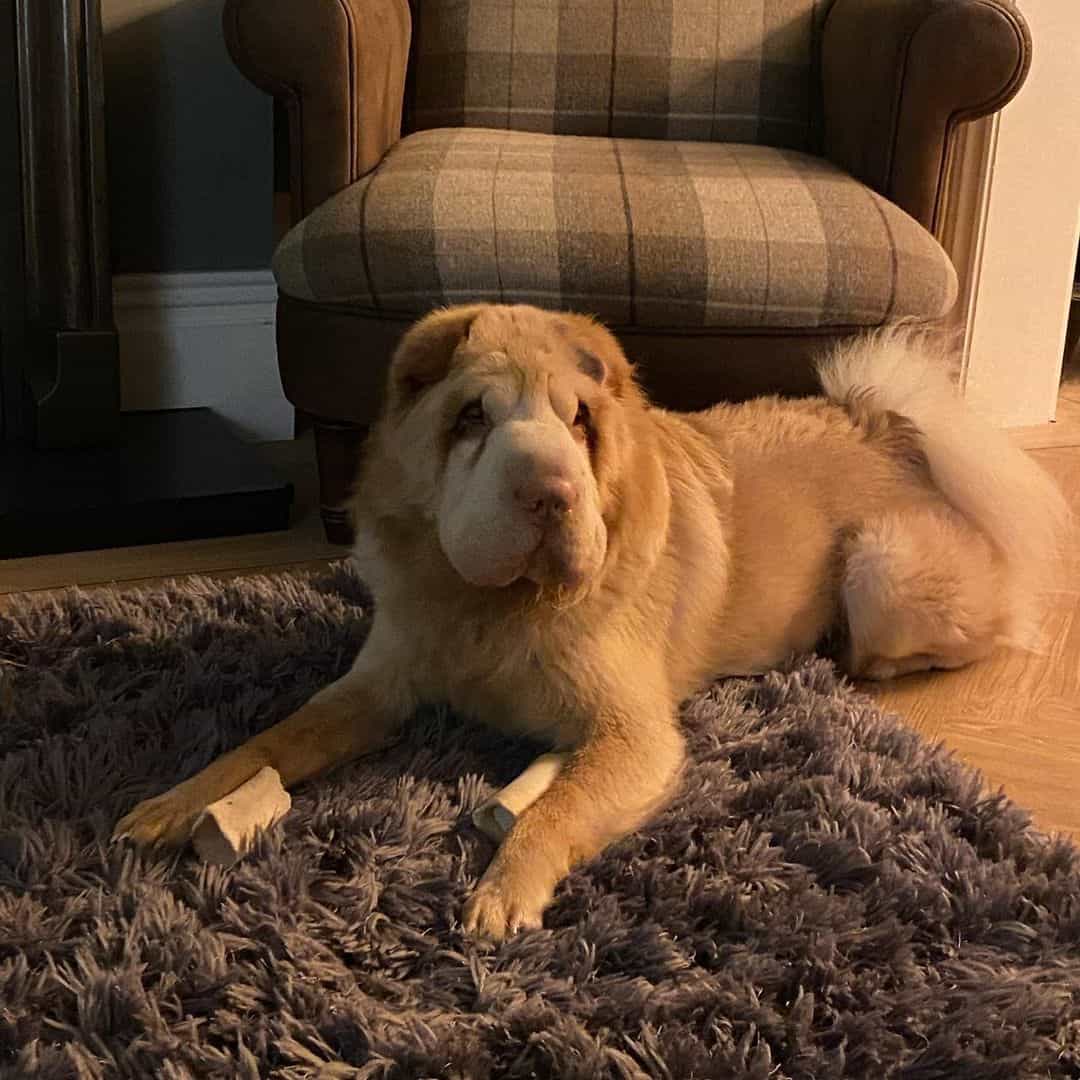
Photo from @keeper_of_bears
According to the American Kennel Club (AKC), when fully grown, the Shar-Pei stands at between 18 and 20 inches at the withers (shoulders) and weighs between 45 and 60 pounds.
As usual, females tend to be shorter and lighter than males.
Like other Shar-Pei types, the Bear Coat Shar-Pei is a medium-sized dog, so it’s not going to be too big.
However, it’s difficult to predict exactly how big an individual dog will be. There are many factors that affect growth, including the size of the parents as well as the amount of nutrition a dog gets as a puppy.
Sizes are only average predictions, and your pup might fall anywhere in between the higher or lower limits. In some cases, they might exceed them!
However big or small your Shar-Pei gets, they should be fully grown by the time they are 16 months of age. It is unlikely that they will continue growing after this point.
Bear Coat Shar-Pei Price
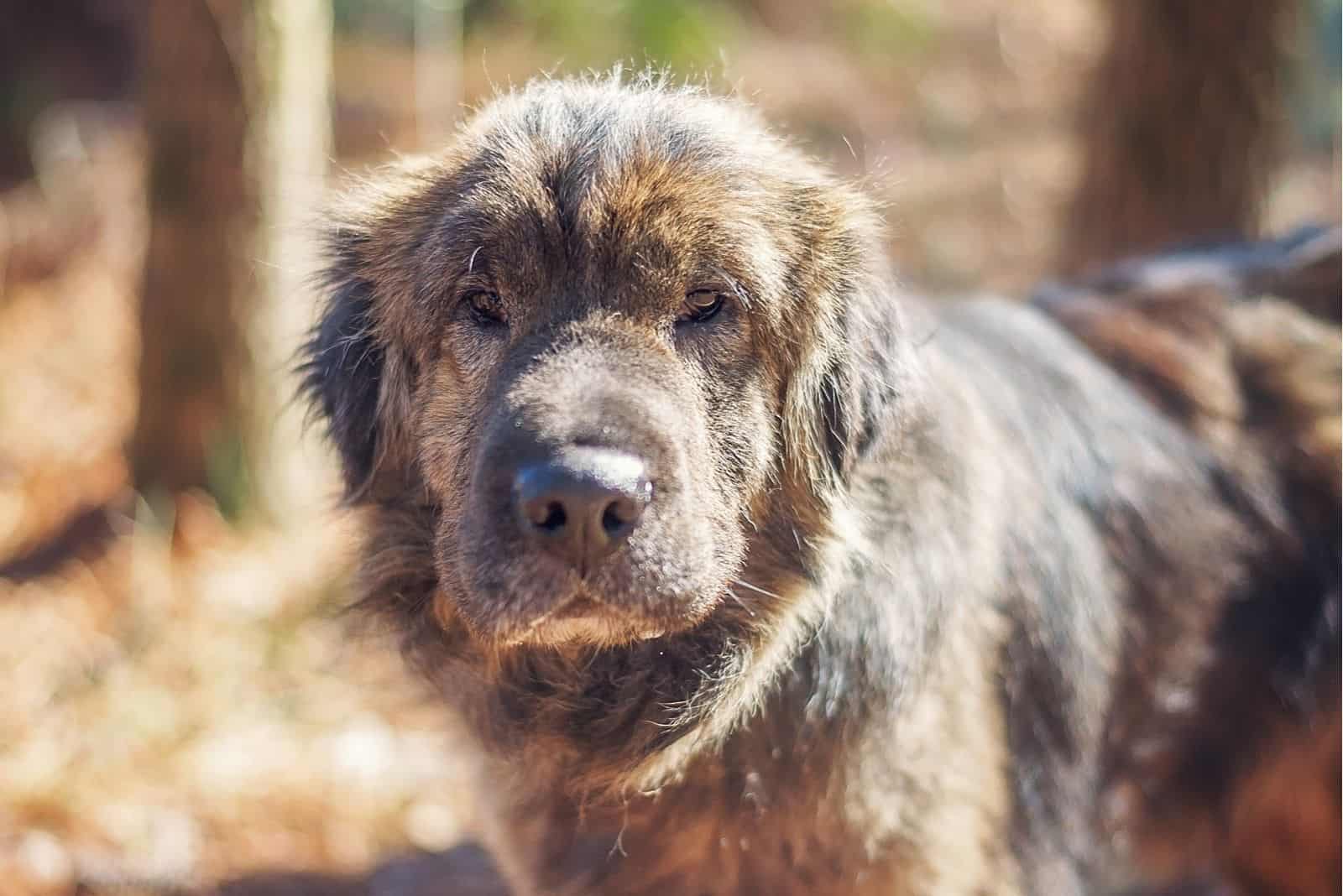
Prices for these adorable pups range from between $800 and $2,000. You might find one for less, but it’s unlikely.
In fact, if you do spot someone selling them for any less, then this should set off alarm bells. These are rare dogs, so you’d have to question why they are being sold for such a low price.
Remember, these are not hybrids, and the long coat is not a genetic fault… it is entirely natural. That’s not to say that they should be overpriced, just that the price should be a fair reflection of their rarity and value.
One fact to bear in mind is that there’s a strong possibility that prices will rise as their fame spreads. The internet gives us instant access worldwide to blogs, websites, and forums that talk about the Bear Coat Shar-Pei.
One example of this is the page that is all about Tonkey Bear, who has achieved celebrity status on Facebook and YouTube within a few short years.
If you are considering getting one of these teddy bear dogs, it might be wise to move quickly before prices start to climb!
If this is beyond your budget, you might want to check with local rescues and shelters. Although it’s a long shot, you might just discover one of these adorable furballs there. It will be a fraction of the cost of buying from a breeder, and you’ll be giving a dog a forever home.
Read More: Shar-Pei Cost: The Price Is Sharp, Eh?
Bear Coat Shar-Pei Breeders
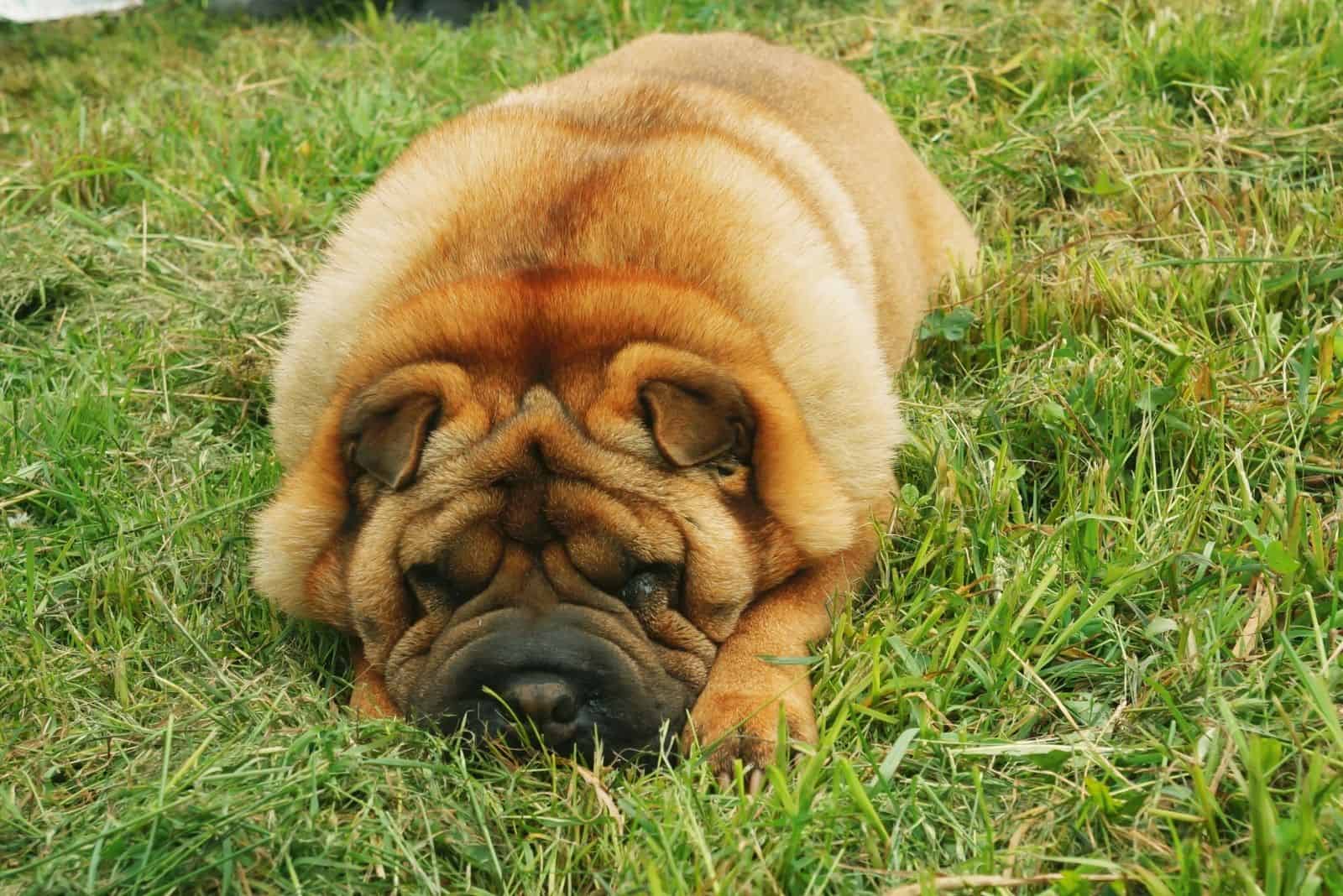
There are many Shar-Pei breeders around the world, reflecting the breed’s rising popularity. However, not all of them will produce Bear Coat Shar-Pei dogs.
Part of your quest to find your pup will involve checking out breeders to make sure they are ethical and responsible. You can look at reviews and testimonials online as well as visit breeders in person.
The latter is a good test as you can tell a lot from the condition of the site as well as get a feel for the breeders themselves. Anyone who refuses a visit and is not willing to discuss their business is unlikely to be operating above board!
Reputable breeders will use DNA testing and screening schemes. They will also use things like inbreeding coefficient calculators to limit the effects of a narrow gene pool. They will have the breed’s welfare at heart.
Not all breeders are the same, so be very careful as to which one you choose.
Black Bear Coat Shar-Pei
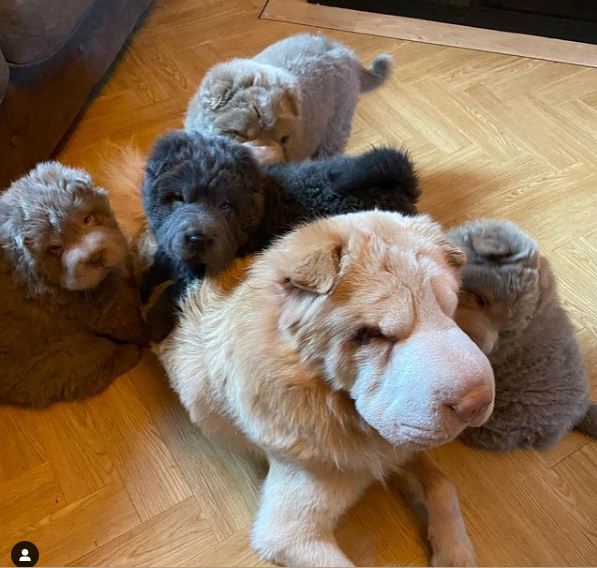
Photo from @keeper_of_bears
Black dogs have a bit of a mixed reception among dog lovers. Throughout history, black dogs have been associated with darkness, bad luck, and evil. People seem to either love them or hate them.
Visit any rescue center or shelter and you’ll see that most of the dogs there are black. It seems that the human psyche often associates black dogs with aggression or behavioral problems when, in fact, there is no scientific basis to suggest that coat color affects a dog’s character in the slightest.
Anyway, the black Bear Coat Shar-Pei looks as adorable as any other color, showing a solid black coat all over. Far from being scary in any way, it has a regal, elegant bearing, and will definitely turn heads as you pass on the street.
Blue Bear Coat Shar-Pei
In terms of dog coat colors, blue is a lighter shade of black. To be precise, it is a dilute version.
It’s more like a beautiful steely-gray rather than actually being blue.
On the long fur of the Bear Coat Shar-Pei, it looks fantastic, and is one of the more popular colors. Blue dogs very often have adorable blue eyes, and even a blue tinge to their nose, which enhances the color of their fur and gives the overall impression of a real blue dog!
Lilac Bear Coat Shar-Pei
Another unbelievably cute coat color! This is achieved by selecting dogs with a chocolate gene and a blue gene in order to produce what is known as a dilute color.
Although it is called lilac, this is another example of the exaggerations used in dog coat colors.
That’s not to take away from the fact that breeders really need to know their stuff in order to achieve this stunning color! It does have a very slight purplish hue, but it is more of a silvery gray.
Bear Coat Shar-Pei Shedding
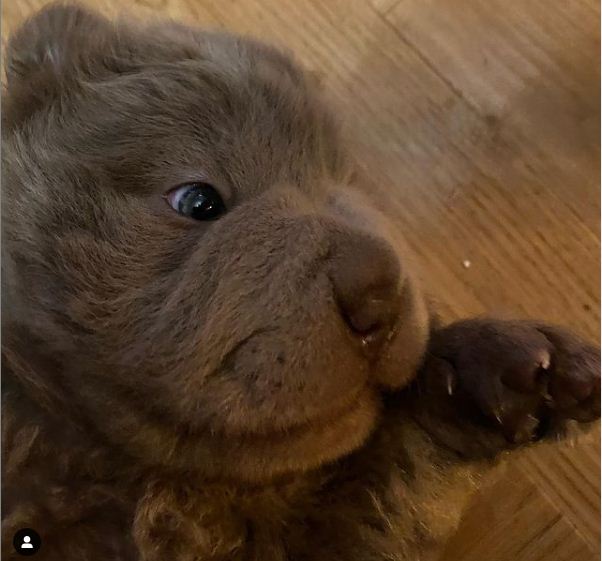
Photo from @keeper_of_bears
You’d expect a long-haired dog to shed a lot, but the Bear Coat Shar-Pei isn’t too bad. You’ll probably notice an increase in hair loss around spring and fall, but aside from this, it doesn’t shed as much as some other breeds.
Out of the three Shar-Pei coat types, the Bear Coat sheds the most, but it still isn’t excessive.
The best way to manage any shedding is through regular grooming. Brushing your dog a couple of times a week will go a long way to cutting down the amount of hair that falls around your home.
Even though it’s a low-shedder, the Shar-Pei is not considered a hypoallergenic breed. This doesn’t mean that they will definitely trigger allergies, but as they are prone to allergies themselves, they will possibly produce more dander, which is one of the main causes of pet allergies.
Flowered Bear Coat Shar-Pei
This is another rare coat color, and one of the cutest. The term flowered basically means spotted, and dogs with this coloring usually have a 3/4 solid-colored head, with spots and ticking on a solid white coat.
In other breeds, this coloration is usually referred to as piebald.
As you might guess, this coloring is not accepted as part of the breed standards for Shar-Peis, but as the bear coat is disqualified anyway, it’s a bit of a moot point!
It doesn’t stop the Flowered Bear Coat Shar-Pei from being adorable.
How Do You Groom A Bear Coat Shar-Pei?
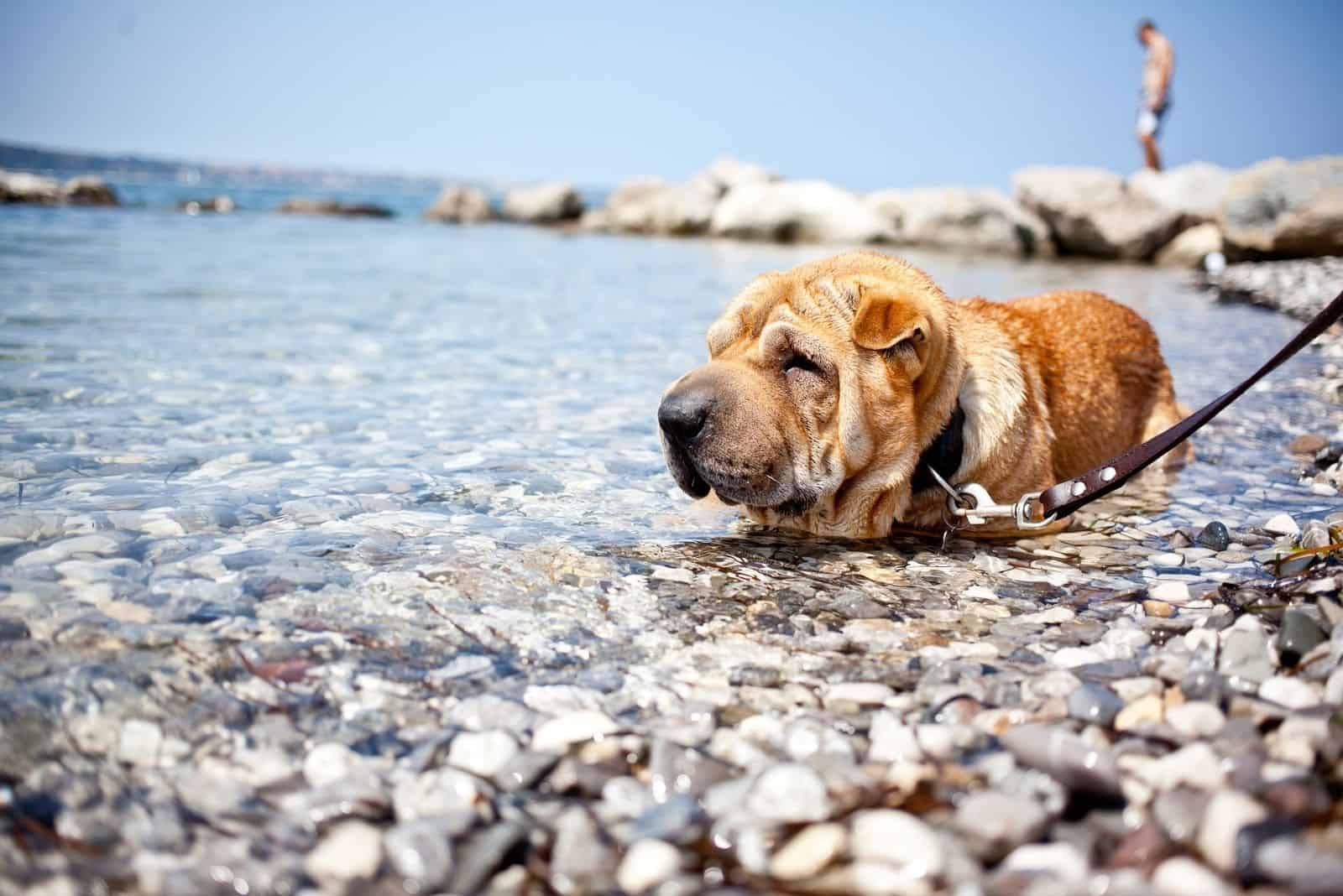
A proper grooming routine is essential for keeping your dog healthy. The Bear Coat Shar-Pei shouldn’t involve too much effort, but it should still be a regular task.
Standard horse coat Shar-Peis are easier to brush because of their short, bristly coats. The longer bear coat needs more attention because you need to take care of the fur as well as the wrinkles hidden beneath.
Although it isn’t long enough to tangle, you should brush your dog’s hair twice a week. This should catch any plant burrs or knots. After brushing, go over the coat with a comb to make sure nothing has been missed.
Watch out for the shedding season in spring and fall when your dog starts to molt. You should brush them every day during this time to get rid of loose hair.
Bathing should be done about once a month or once a week during shedding seasons. These dogs don’t really like water as a rule and will avoid it whenever possible.
It’s best to start this process early in their life so they get used to it. If possible, place cotton wool balls in the dog’s ears. Wet ears can trigger infections, which come all too frequently to this breed.
After a thorough brush down, you can now wash your dog. Make sure the water isn’t too hot, and always use a good-quality, branded shampoo and conditioner.
Make sure you clean in between the folds of the skin as this is where they have the most problems. Dirt and bacteria can build up, causing infections (see the section on health problems below).
Rinse them off thoroughly and pat them dry with a towel. If possible, dry them off completely with a blowdryer on the lowest setting.
Do Bear Coat Shar-Pei Smell?
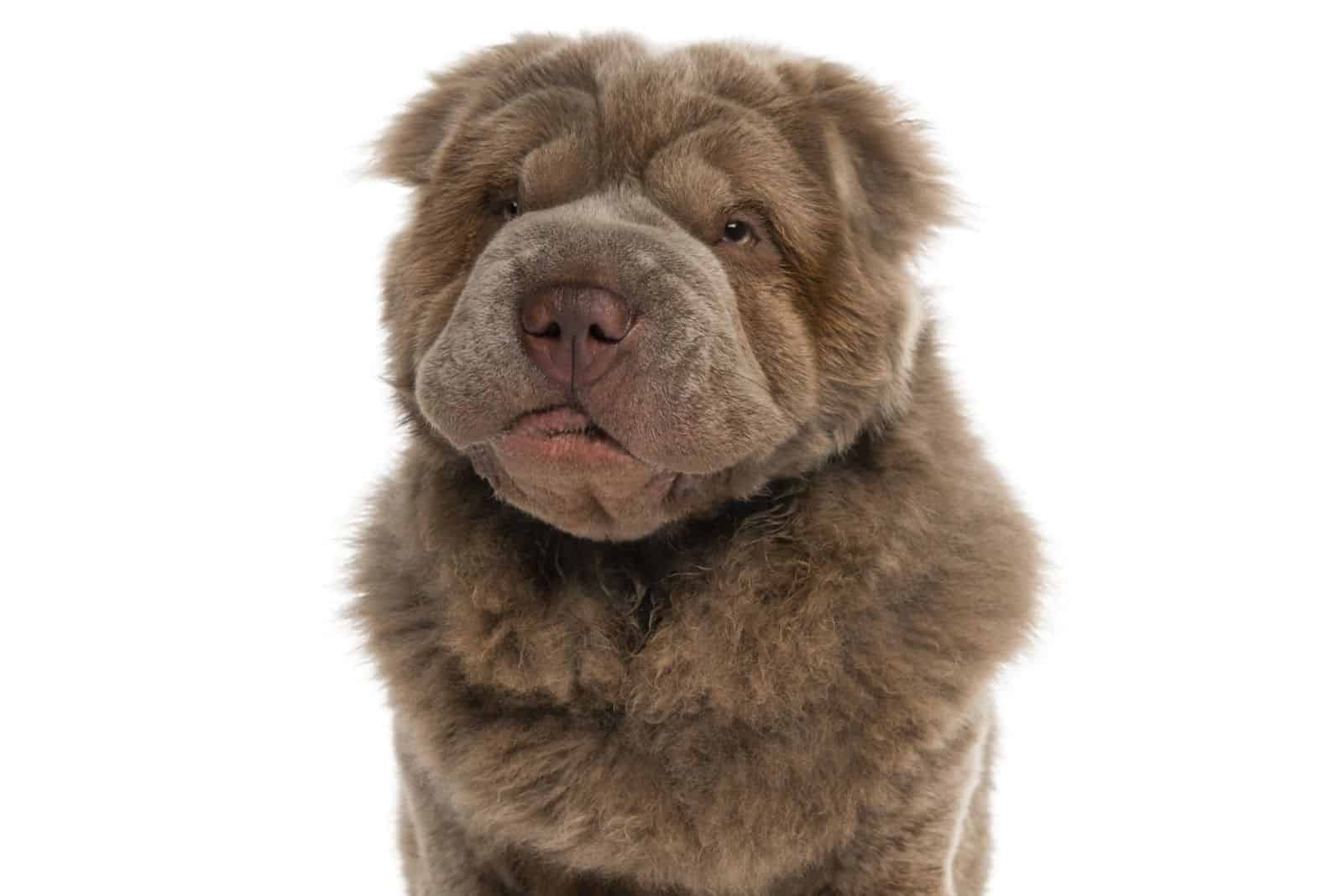
Yes, Shar-Peis are said to have a distinctive odor. Some people don’t mind it at all while others detest it. This is caused by natural oils on their skin.
These stay in the wrinkled folds of their skin where they start to evaporate, which causes the smell.
However, this should never be overpowering. These dogs are naturally clean, but they can suffer from health conditions that may result in bacterial infections.
When these happen in the skin folds, it can cause some pretty unpleasant smells.
The best way to handle the situation is through regular grooming and a good diet.
If your dog still pongs, then you might want to ask your vet for advice.
Do Bear Coat Shar-Pei Drool?
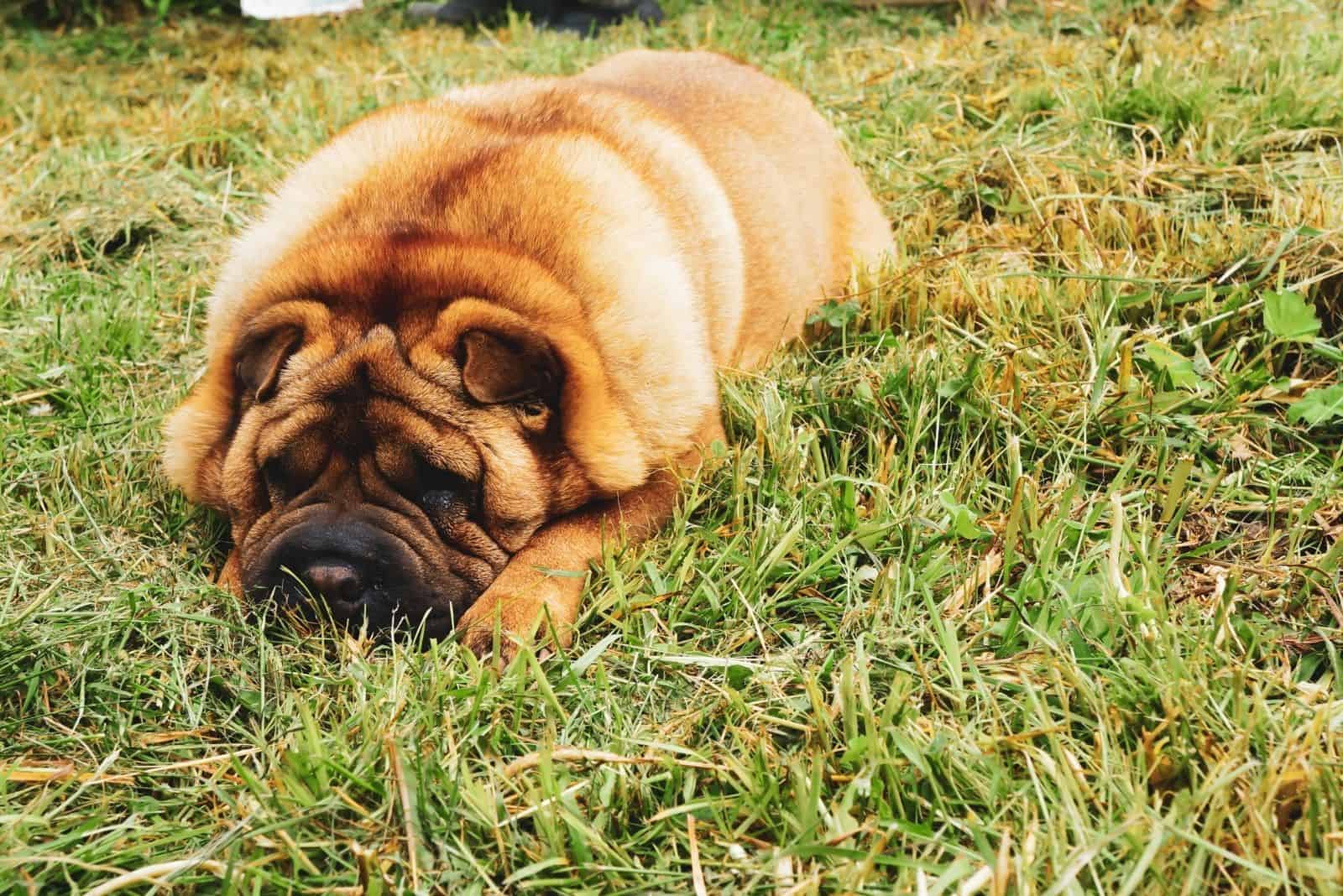
Yes, they do. In fact, they are major droolers! If this grosses you out, or you can’t cope with dog saliva on your clothes, floor, and furniture every now and then, then perhaps this is not the wisest choice of dog.
This is a trait often seen in dog breeds with excess skin around the muzzle. All dogs drool to some extent, especially when they smell food or anticipate feeding time. It’s a natural instinct called the Pavlov reflex.
The trouble with the Shar-Pei, and other dogs with saggy skin around the face, is that they are unable to control their saliva. To add to the problem, things other than food can make them drool, such as when they become excited, anxious, in pain, or stressed.
It can be difficult to determine what has stimulated this response at times, but it is important to learn the differences between each cause as it could be a sign that your dog is sick.
The best thing to do if you are unsure is to try to take their temperature and check for an irregular or rapid heartbeat. If the temperature rises above 39.5°C, then you should contact a veterinarian immediately.
How Long Do Bear Coat Shar-Peis Live?
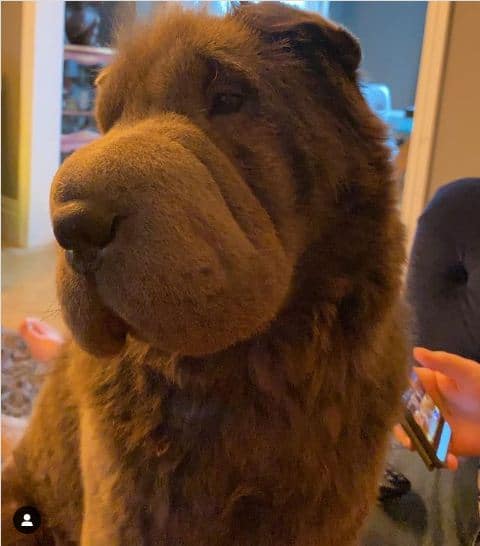
Photo from @keeper_of_bears
Shar-Peis have a lifespan of between 8 and 12 years, with an average of 10 years. This falls roughly into the life expectancy for all dog breeds, but is generally on the lower end of the scale.
For a medium-sized dog, this is quite low. For example, a Labrador Retriever is slightly bigger than the Shar-Pei, but has a lifespan of 10 to 12 years.
Generally speaking, the larger the dog, the shorter its life expectancy is. A Great Dane has a life expectancy of between 8 and 10 years, whereas the Chihuahua can live for more than 20 years!
The reasons behind this are not fully understood, but one thing that obviously affects a dog’s lifespan is the health issues it faces.
We’ll examine the Shar-Pei’s health concerns in the next section.
Health Problems
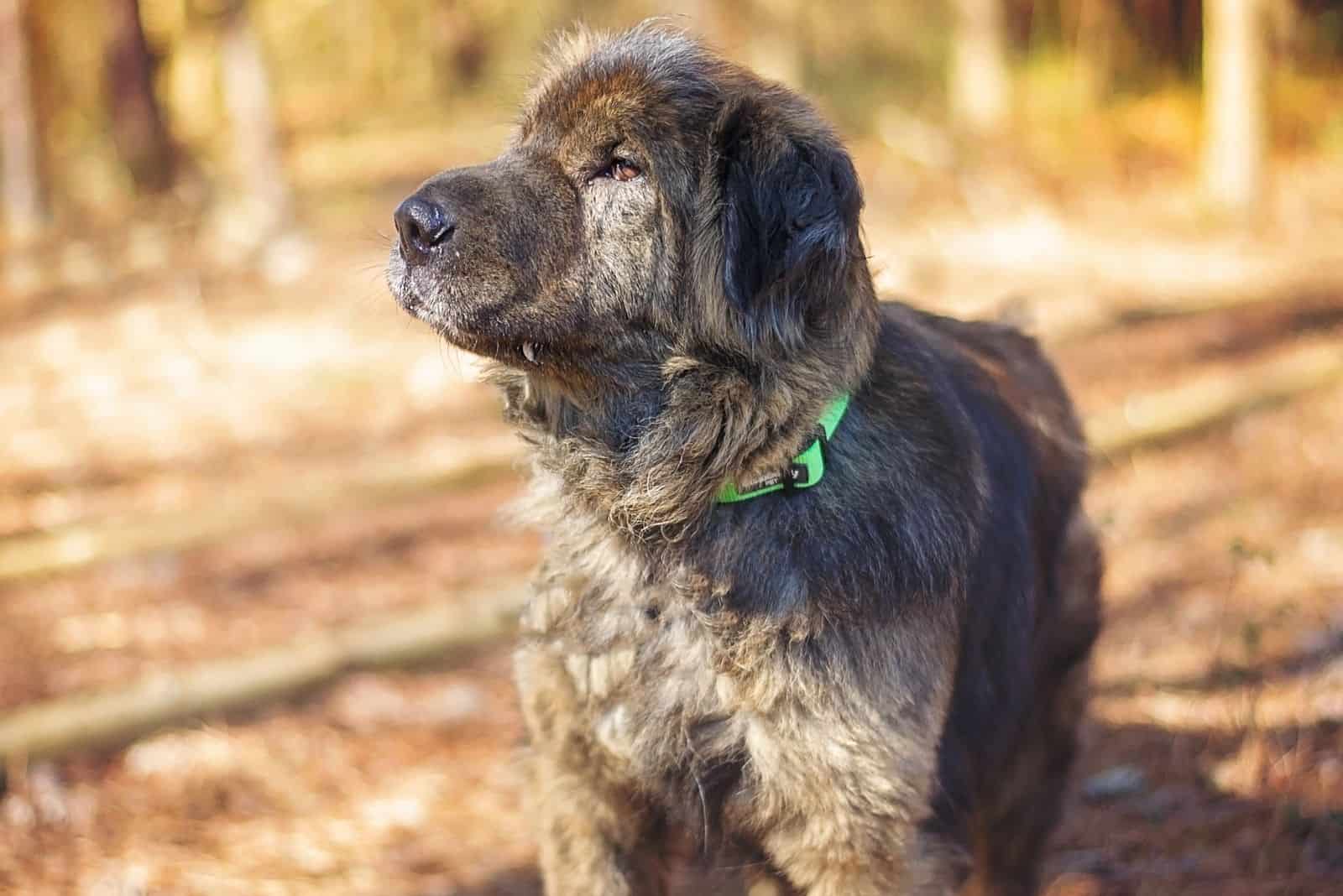
Shar-Peis are prone to a range of health conditions, many of which are connected with their wrinkly skin.
• Skin problems – infections and inflammation in the wrinkles and skin folds are common in Shar-Peis. This is why grooming and cleaning are essential for their health.
• Hypothyroidism – an underactive thyroid gland doesn’t produce enough of the hormones that enable the dog to perform certain functions. This causes the body to slow down and gain weight. The dog will become lethargic, and you’ll see changes in their skin and coat.
• Entropion/ectropion – conditions where the eyelid turns inward or outward, causing the hairs to irritate the eye.
• Demodectic mange – probably the main cause of Shar-Pei skin problems. All dogs have colonies of mites living on their skin, but most manage to live in harmony without causing any problems. However, the Shar-Pei suffers more than most other breeds as the mite colonies grow too large, especially in pups. This is more likely to affect short-haired dogs, which is a point in the Bear Coat Shar-Pei’s favor as they won’t suffer as much as their short-haired counterparts.
• Atopy – an increased sensitivity to allergens that can cause dry, itchy skin. This is triggered by dust mites, pollen, food allergies, grass, etc.
• Ear infections – Shar-Peis have unique, triangular ears. They are small and tight, which restricts air from flowing through, leading to an increased risk of infections.
• Familial Shar-Pei fever – a disorder causing painful, swollen joints, high temperature, a swollen face, vomiting, and diarrhea. This is also known as Shar-Pei Autoinflammatory Disease (SPAID). This affects up to 20% of all Shar-Pei dogs.
• BOAS – Brachycephalic Obstructive Airway Syndrome can cause severe breathing difficulties because of the restricted airways. A brachycephalic breed (including Pugs, Bulldogs, Frenchies, etc.) has a flatter face and a short muzzle.
• Renal amyloidosis – One in four Shar-Peis who contract Familial Shar-Pei Fever fall victim to renal amyloidosis; a fatal kidney disease.
These are just a few of the health conditions that can affect this breed, but there are many others, including a high risk of hip/elbow dysplasia and patellar luxation. All of these are painful conditions affecting the joints, and most will require surgery.
Finally, they are particularly prone to ruptured or torn cruciate ligaments of the hind legs. This is because breed standards state that the hind legs must be straight rather than naturally curved.
The dog moves more stiffly as the ligament is tightly sprung. If they put too much strain on this, for example, by running upstairs, there is a danger of rupturing the ligament.
With a list of health problems like this, you need to be financially prepared for some big vet bills!
The Dog For You?
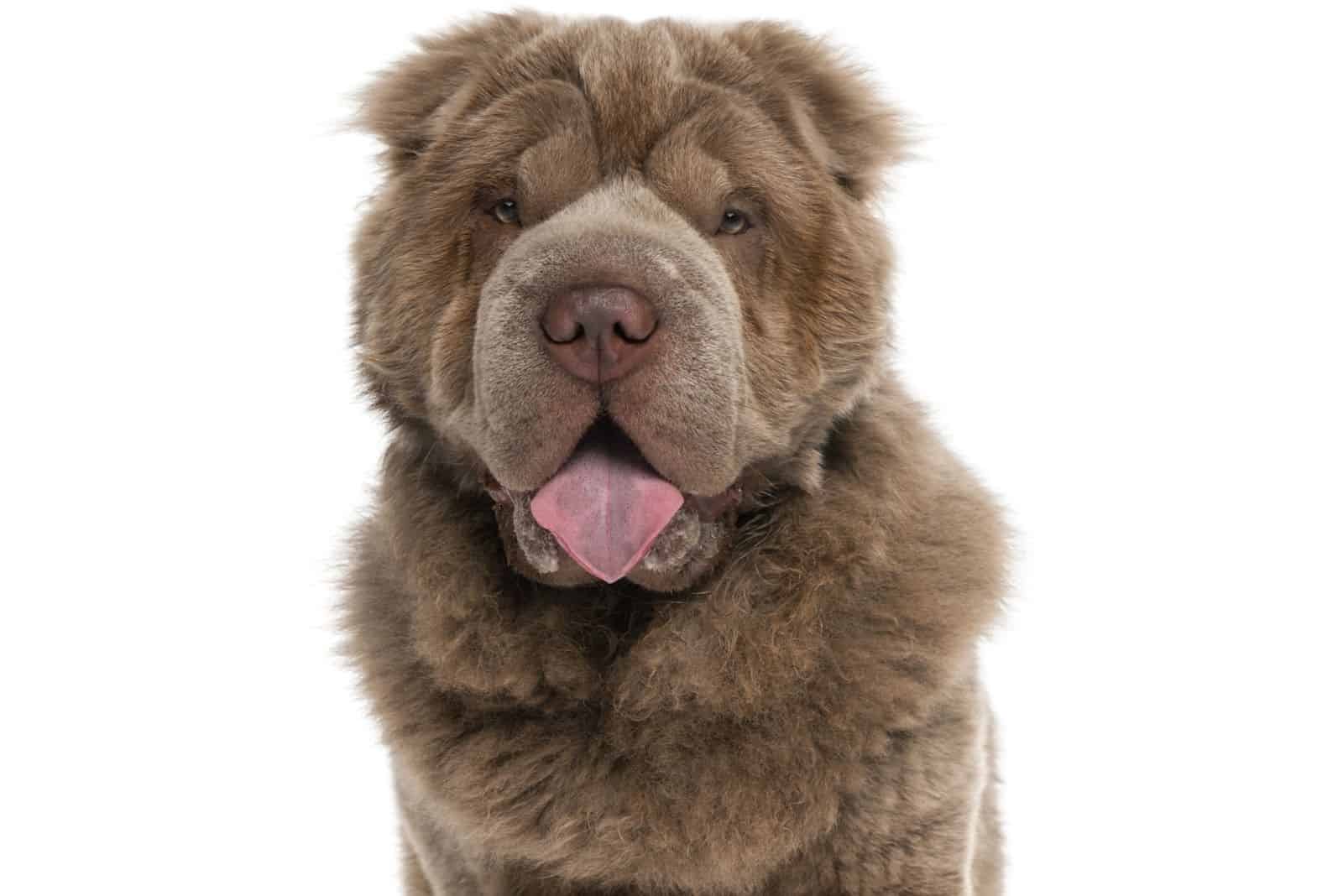
Now you know all about the Bear Coat Shar-Pei!
They’re not the best choice for first-time dog owners as they need an experienced hand. Early socialization and training are a must, and you need to be firm and fair but kind.
Training has to be consistent, and you have to persevere. They are intelligent dogs with an obstinate streak, but once you get through to them, the training should be pretty straightforward.
You must commit to a regular grooming routine, keeping that beautiful fur in great condition, as well as making sure the skin folds are clean.
There’s a good chance your dog will smell and drool. You can take steps to help with the smell, but it’s difficult to eliminate it entirely. As for drooling, you either put up with it or find another breed!
Your pup may face a daunting range of health issues, and medical costs could be high. If you choose this dog, then you have to prepare yourself for this possibility.
As you can see, it’s not all about cuteness. There’s a lot of effort and preparation involved!
In the end, it all depends on what you want out of a dog. The Bear Coat Shar-Pei makes a great companion, given the chance. It’s a dog that wants to be your best friend, and one that is willing to protect you. It is calm and docile, but it will give a warning when needed.
You couldn’t ask for a more loyal friend, but don’t expect them to welcome strangers straight away. It’s generally considered best to avoid having them in a home with very young children because of their tendency towards mouthiness.
However, this is another trait that varies from dog to dog, and it can conceivably be controlled through training.
As many people have said before, there’s a dog out there to suit everyone. Or, someone out there to suit every dog. The Bear Coat Shar-Pei needs someone special to take them on. So, is that you?
Read Next:
• The Miniature Shar Pei: Wrinkles That Captured The World
• Sharpull Terrier: Meet An Unusual Designer Dog
